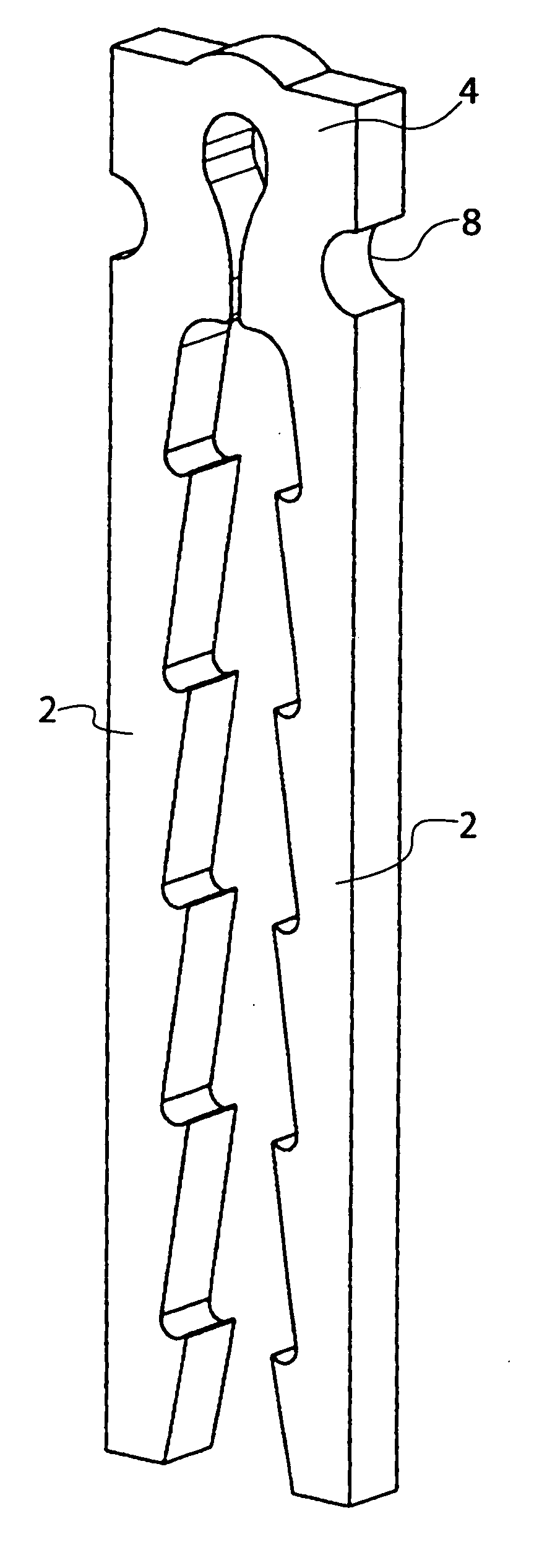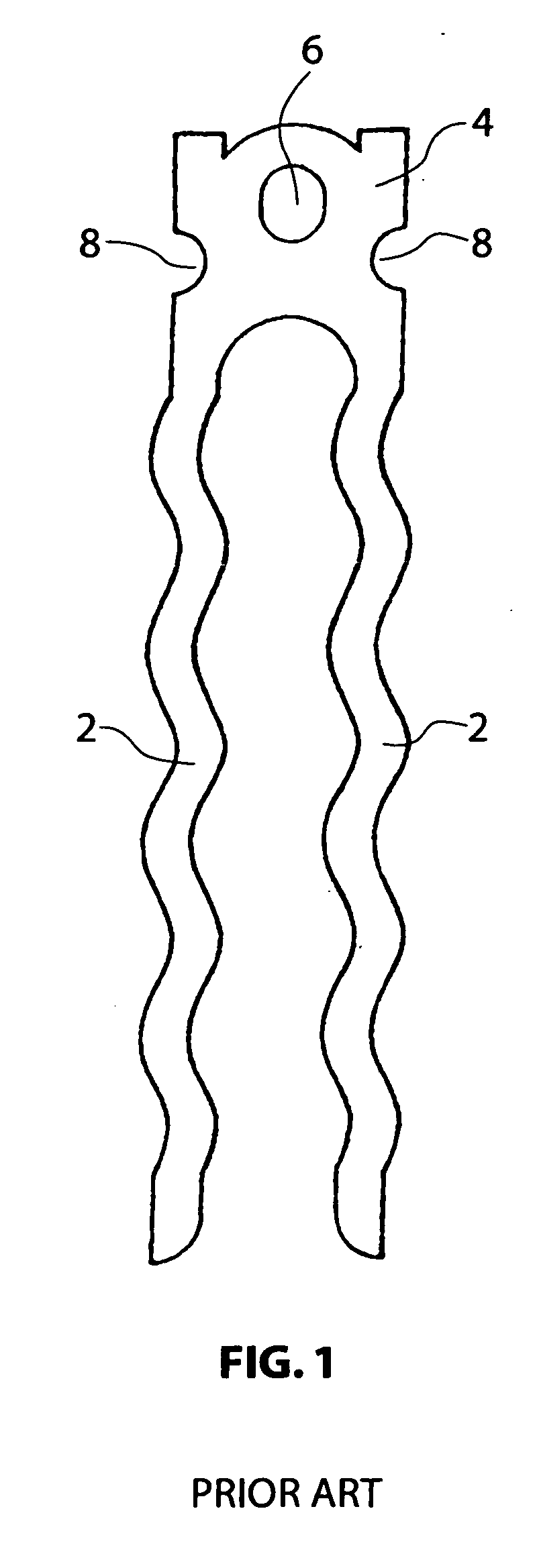Cast-in anchors
a technology of anchors and cast-ins, which is applied in the direction of nails, mechanical equipment, fastening means, etc., can solve the problems of increasing material costs, affecting the installation of anchors prior to casting, and failure mode of this type of anchors, and achieves the effect of significantly more rapid achievemen
- Summary
- Abstract
- Description
- Claims
- Application Information
AI Technical Summary
Benefits of technology
Problems solved by technology
Method used
Image
Examples
Embodiment Construction
[0039] The anchor shown in FIGS. 2 and 3 is of the general type shown in FIG. 1 with a head 4 for coupling to lifting apparatus and a pair of substantially parallel legs 2 extending from the head 4. The particular head 4 shown is designed for co-operation with a lifting clutch in the form of a ring clutch with an arcuate locking bolt received within the eye 6 although it is to be understood that the head 4 could be of a different detailed design for use with other types of lifting apparatus. As with the prior anchor, the anchor is cut from thick metal plate by laser beam or plasma arc cutting. In the particular form shown, the eye 6 is also laser or plasma cut as part of a continuous cutting operation as described in our patent 751863. However the eye could alternatively be formed by a separate stamping operation after cutting the anchor.
[0040] In the conventional wave profile in the anchor in FIG. 1, the profile at the inner edge of the leg engenders, when the anchor is under load...
PUM
 Login to View More
Login to View More Abstract
Description
Claims
Application Information
 Login to View More
Login to View More - Generate Ideas
- Intellectual Property
- Life Sciences
- Materials
- Tech Scout
- Unparalleled Data Quality
- Higher Quality Content
- 60% Fewer Hallucinations
Browse by: Latest US Patents, China's latest patents, Technical Efficacy Thesaurus, Application Domain, Technology Topic, Popular Technical Reports.
© 2025 PatSnap. All rights reserved.Legal|Privacy policy|Modern Slavery Act Transparency Statement|Sitemap|About US| Contact US: help@patsnap.com



